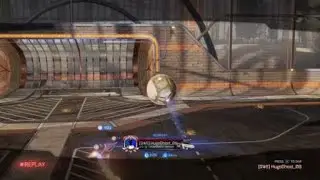Vietnam's BEST Kept Secret Cu Chi Tunnels EXPOSED in 4K
#CuChiTunnels #Vietnam #History #VietnamWar #Tourism #Curiosities
Let's explore the fascinating Cu Chi Tunnels, one of Vietnam's most iconic destinations. Learn the incredible history behind these tunnels, discover how they were used during the Vietnam War, and see what it's like to visit this place today.
This tour took place on March 26, 2024.
--------------- Video chapters:
0:00 Synthesis
0:16 Entrances to the tunnels
2:38 Interior of the tunnels
5:03 Bunkers and more
6:03 Shooting ranges
6:32 Other bunkers
-------------- Brief explanation:
Throughout Vietnam's turbulent history, these iconic Cu Chi tunnels, located 40 km from Ho Chi Minh City, formerly Saigon, have witnessed the sufferings of two fierce wars and symbolized the tenacity and resourcefulness of the Vietnamese people.
The Cu Chi Tunnels are listed among the 7 must-see epic and adventurous places in Southeast Asia by The Travel and one of the coolest places in the world by The New York Times.
The tunnels, a gigantic system of underground tunnels, were originally built beneath the jungle terrain, connecting tunnels between villages and communes during the Indochina war (1945-1954) against French colonialists. It served as a hiding place for Vietnam's revolutionary troops to move discreetly between regions and evade French scouts.
During the Vietnam War against the Americans (which lasted more than 17 years, until 1975), the network of tunnels was expanded to house more troops, carry communications and supplies, provide medical treatments, provide shelter from aerial bombings, and organize surprise attacks, after which they could disappear beneath the floor.
As a military headquarters, the Cu Chi Tunnels played a key role in the resistance of Vietnamese forces to the American army in South Vietnam. It served as an isolated stronghold to plan strategies and launch successful military campaigns, notably the victorious Tết Offensive in 1968.
Extending to the Cambodian border, the Cu Chi tunnel system has reached a total length of almost 250 kilometers. The tunnel complex surprises visitors with its intricate architecture and resilience in the area of clayey soil mixed with laterite or laterite.
At ground level, there are hundreds of creative traps and fake bunkers set up to impale and trick enemies.
The most common anti-American soldier traps consisted of a collection of traps and disguised holes, which had generous sharp metal spikes, with poisoned tips, capable of piercing human flesh.
The entrances to the tunnels are so narrow that only Vietnamese could get through, with wooden covers camouflaged by leaves.
The tunnel system has three deep levels where numerous passages are connected through a central shaft and extend to the Saigon River. The first level (3 meters below ground) was able to resist chemical warfare, bullets, tanks and armored vehicles, while the second (5 meters below ground) was able to resist the destructive power of bombs. The third level is the deepest (more than 8 to 10 meters below ground). Between levels, leak hatches were made to contain toxic gases, along with undisclosed ventilation openings leading to the ground. The communication passages were built with a width of 0.8 meters, a height of 1.2 meters and a ceiling of at least 1.5 meters thick.
The tunnels were very tight and dark. It's incredible to imagine that the Vietnamese spent days inside, and at the height of the war, they only came out at night to hunt for food and prepare new traps. During the visit we learned that the second biggest cause of death in the war was malaria and that 100% of the tunnel inhabitants had roundworms or worms in their stomach. Water and food supplies were extremely limited, not to mention the heat.
A little-known fact about the Cu Chi tunnels is that Vietnamese soldiers excavated by hand with primitive tools this immense underground network, with hundreds of kilometer-long tunnels.
The internal structure of the tunnels is compared to a man-made underground city, as it accommodated the necessary facilities for a thousand soldiers and residents, such as kitchens, hospitals, theaters, arsenals, chambers and command centers.
The Cu Chi Tunnels now function as an open-air war memorial, accessible to tourists of all nationalities.



















